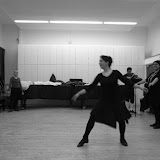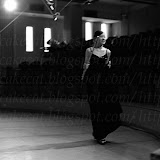4月26日(六)14:00 精確度(忠於原作)與自由度
探討演奏時如何保有忠於原作的精確度,以及在音樂詮釋上的自由度
What is music?
演奏音樂時要思考:
1. What does the composer(or music) mean?
2. Is the composer's idea sacred (unchangeable) or flexible?
The two ideas above lead to
(1) Historic performance practice: historical, emphasize on composer's vision.
(2) Adapted to modern time to satisfy our taste. (Use Boehm flute, and usually criticized by historians.)
But we always move between the two above.
Composer --> Original idea --> Score --> Interpretor
Interpretor --> Score --> Original idea --> Realisation
Should we be precise or have some freedom?
What is the most important in interpretation?
--> Just do what is on the paper!!
What to do?
1. Careful reading!!
2, Understanding.
There is only "ONE" accurate interpretation!
Example:
J.S. Bach: Suite in b minor
Correct in understanding the French rhythm
"Alla francese" in Telemann's sonata
Freedom --> Flexibility in an order.
The more you read, the more flexibility you have.
"Rubato": players have to be sure about the rhythm. (用節拍器練習!)
Be flexible but precise!
Rules are used as guides to avoid mistakes and to gain more flexibility.
Suggested Edition
For Bach: Urtext, Breitkopf (Edited by Kuyken)
For Mozart: Novelle (Edited by Trevor Wye) for the easier piano part.
相關文章:
葛拉夫大師講座次日筆記
葛拉夫大師講座三日筆記
Monday, 28 April 2008
Subscribe to:
Post Comments (Atom)

Image works are licensed under a Creative Commons Attribution-Noncommercial-No Derivative Works 2.5 Taiwan License.

Text works are licensed under a Creative Commons Attribution-Noncommercial-No Derivative Works 2.5 Taiwan License.










No comments:
Post a Comment